Root rot on cucumbers appears due to a fungus that spreads with soil and seeds. In some cases, bacteria are the causative agents. The problem can be prevented by protecting plants before planting and taking preventive measures. But if this is not done, then the crop may be at risk.
Content
Root rot of cucumbers: reasons
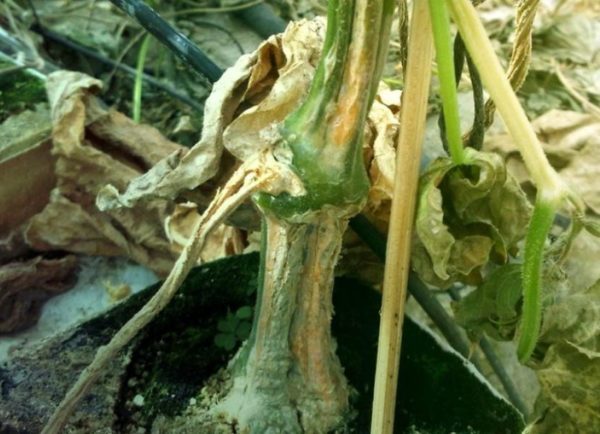
The problem arises with sudden changes in climate, heavy watering or freezing, but these are only the conditions in which the disease begins to develop. The reason is the Fusarium fungus, so the disease is also called Fusarium. The roots are affected by several types of pathogens from the genus Pitium. They affect growing cucumbers, cause rotting and yellowing of leaves. Propagated by nematodes, soil and rotting plants.
Fusariosis mainly affects plants in greenhouses, most often during the formation of fruits. The pathogen is stored in seeds, plant debris, soil - this is why it is important to regularly update and dig up the soil. The fungus enters the plants through the damaged areas, the risk of infection increases with the loosening of the earth. The first symptoms can be noticed by external signs:
- darkening of the legs of the fetus;
- yellow spots on the leaves;
- cracks on the shoot near the ground;
- softening of the roots, external signs of decay;
- withering of the ovaries in the last stage of the disease.
In order not to confuse root rot with other diseases, compare the photo of the diseases. For the development of the disease, conditions are important. Rotting occurs at a temperature that goes beyond the comfort of plants 15-25 ° C. Cooling or too dry period should be long for organisms to develop. Short-term temperature changes are not dangerous, unless they are frequent. With a sharp change in climate, immunity decreases in cucumbers, which means that the risk of infection increases.
The optimal level of acidity in which harmful microorganisms are actively developing is at the level of 5-6 points. The temperature range is wide, but most pathogens begin to multiply at 7-22 ° C. The best environment is moist and musty. If you abundantly water the earth, but do not loosen it, then create the most favorable conditions for the development of root rot. Aeration is necessary for the root system for respiration, metabolism. When this is not, the plant weakens, becomes open to fungi and infections.
Dry root system and a high concentration of salts in the soil can also lead to the development of pathogens. When perishing, parts of plants become a suitable environment for the propagation of pests. They first occupy the affected space, and then spread to healthy areas. The main causes of root rot infection:
- too abundant watering;
- prolonged cooling;
- sudden changes in temperature;
- the presence of plant debris in the soil;
- pathogen-infected cucumber seeds;
- crop rotation failure;
- excessive humidity;
- high concentration of salts;
- dead sections of the root system.
Treatment methods
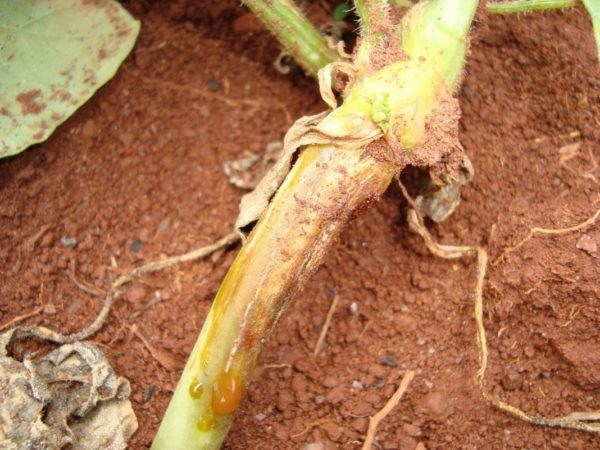
The first question that arises as soon as root rot in cucumbers appears is: what is the treatment? As with other diseases, there are three methods to deal with the problem: chemicals, biological products and folk remedies. Chemistry can be used only in the first stages, before flowering. When the fruits begin to form, it is time to switch to safer drugs to avoid the accumulation of harmful substances in cucumbers. Of course, the drugs are more effective: they are concentrated, they affect the problem pointwise. But with the help of folk remedies, you can achieve a good result.
The process of decay proceeds quickly enough, at some stages it is too late to treat root rot. But in the first stage, when wilting has just begun, you can stop the disease and save the crop. In the lower part of the plant, if you look closely, you can see the rudiments of the roots. It is necessary to sprinkle fresh soil on them so that they can develop.
Before this, the stem is cleaned from the lower leaves, slightly tilted, laying on the soil. In two weeks, new roots will begin to draw useful substances from the soil, taking on all the work to provide the plant with nutrients. The old part of the root will not interfere if treated with drugs that prevent the spread of the disease.
Chemistry
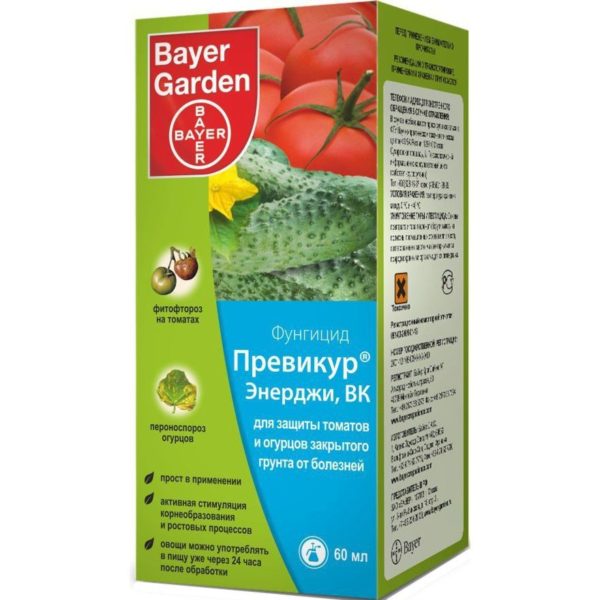
If the signs are clearly noticeable, then simple methods can not get rid of root rot, you need to act with active drugs. For example, Previkur Energy is a two-component fungus control agent. It acts on the mycelium, blocks the reproduction of fungal spores. The drug can restore the plant's immunity to a healthy state so that it can fight pests in a natural way. After application, the development of the roots improves, the resistance of cucumbers to diseases increases. Apply it in solution:
- 30 ml of the drug;
- 20 liters of pure water.
Each square will take two liters of liquid. The effective effect is increased if the drug is combined with contact fungicides. For prevention, plants need to be treated immediately after the seeds have been planted in the ground, and then every two weeks. Method of application: root watering.
Another effective drug: Fundazole. It is quite toxic to humans: this is why it is important to follow the recommended doses. For plants, fungicide is safe, but accumulation in fruits harms people. The main advantage: the wide temperature range at which the substance acts. It can be used at almost any time. The digestibility of the drug by plants is high, with normal watering, the substance begins to act almost immediately.
Biological products
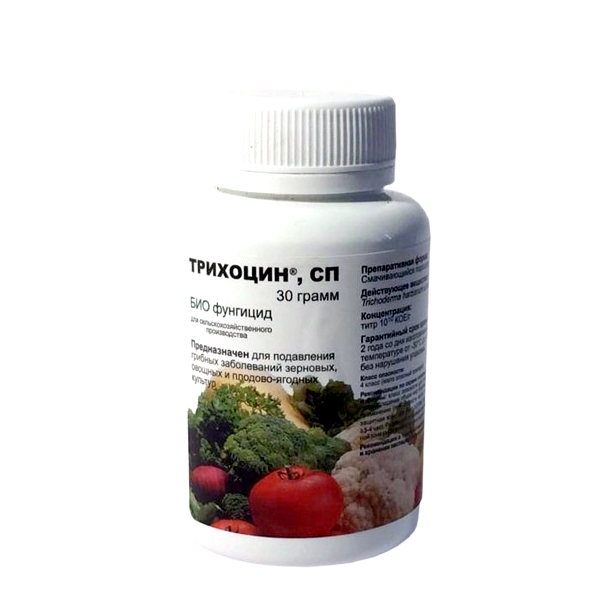
Substances from this group are safer for humans, are softer, but are comparable in effectiveness with chemical fungicides. You can use biofungicides at any stage of growth, even when the fruits are already formed. Harmful substances do not accumulate, there are ripened cucumbers immediately after processing. Such drugs usually work from 3 to 7 days, you can not combine them with each other or other fungicides, otherwise they will not help.
Trichocin, so named for the main substance in the composition. Suitable for processing during the growth period, it works with a slight delay: 3 to 5 days after application. Sold in small bags to be diluted in a bucket of water. Cucumbers are watered with the resulting solution, about 100 ml are spent on each bush.Do not use with other drugs.
The drug Gliokladin is suitable for treatment and prevention. Valid for a week after application. It must be used separately from other substances, otherwise the beneficial effect is neutralized. This biofungicide improves the condition of the soil, fights against pathogens, is safe for plants and people. You can apply even in the later stages, there will be no harm to the fruits. The acidity of the soil should not exceed 7 points, otherwise a useful fungus will not work. The drug is laid under the root or water the plants with a solution.
Gamair biofungicide is useful against most fungi. It is used to disinfect soil in a greenhouse, treat root rot and other diseases. It is sold in tablets that need to be diluted in water: 2 pieces per bucket. The solution treats the affected areas of plants by watering the ground at the roots.
Folk methods
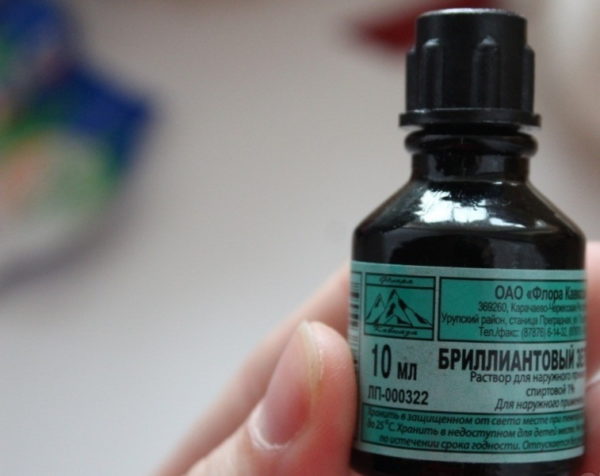
If you use the drugs too late or root rot has just begun to spread, you can use alternative methods. To combat the problem, make a solution with the addition of improvised means. They are quite effective, and the ingredients for the solutions can be found at home. Here are some recipes to help deal with the disease:
- Dilute 2 tablespoons of baking soda in a bucket of water at room temperature. Pour the beds first with warm water to moisten the ground, and then the resulting solution under the root.
- Zelenka is effective against rot due to copper in the composition: it prevents the development of fungal infections. Mix the substance dropwise with water. For prevention, add 1 drop to the bucket, for treatment - 10. Loosen the soil in the garden, pour cucumbers with a solution under the root.
- Serum prevents the development of the disease due to the acidic composition. It is diluted with water in a ratio of 1: 9 and 40 drops of iodine are added. The roots are watered with a solution and the green part of the plant is sprayed.
You can slow down the development of the disease by sprinkling the lower part of the plant with wood ash, charcoal or ground lime: this will slow down the development of the disease. An alternative is a talker of 6 tablespoons of chalk, teaspoons of copper sulfate, dissolved in a liter of water. With a mixture you need to wipe the lower part of the plant and, if possible, part of the root.
Prevention
It is not always possible to cure a disease, so you need to do everything possible to prevent the causes. To do this, you need to regularly change the place of planting of cucumbers, observing the crop rotation, remove the remnants of the previous crop, dig the soil, cultivate it, take care of the greenhouse. Compliance with simple rules will help you not to remember about the disease throughout the season.
Seed treatment
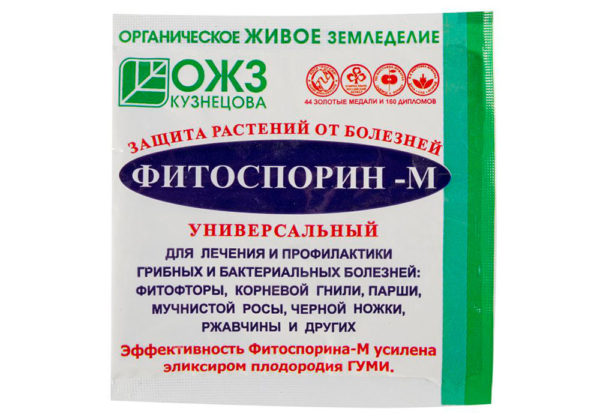
The first cause of root rot is infected seeds. The causative agents of the disease can be in a dormant state and, if it enters the ground, they will begin to actively attack the roots. Sanitize seeds with potassium permanganate solution or Fitosporin before planting in seedlings or in a greenhouse. Additionally, you can dip them in a growth-stimulating drug: so the first sprouts will seem faster, and the whole cycle will be reduced by several days.
The soil
Harmful microorganisms are often found in the soil, from where they move to plants. Therefore, soil preparation is a mandatory stage in the cultivation of cucumbers. Observe crop rotation so that the soil does not lose its properties: cucumbers cannot be grown for a long time in one place. For disinfection, a solution of copper sulfate is used in a ratio of 0.3: 10. Processing is carried out 7 days before planting. Soil needs to be updated every season. You can leave the old one, but then it needs to be disinfected and saturated with minerals.
Greenhouse care
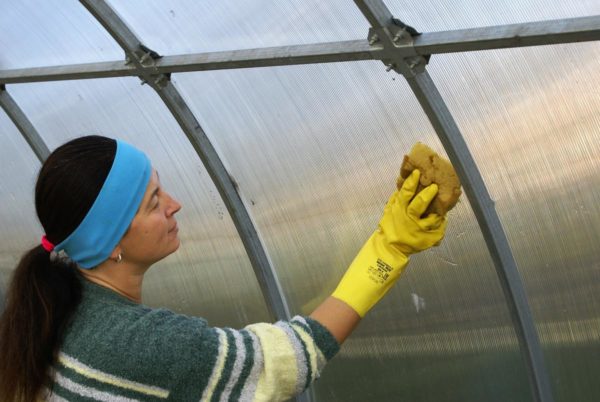
Root rot affects crops in closed ground due to the fact that a special microclimate is formed there. Harmful bacteria can remain not only in the soil, but also on the walls of the room, quickly spreading to plants as soon as possible. The greenhouse needs to be cleaned after each season:
- to process with a solution of copper sulfate all structures indoors;
- process metal parts with disinfectants or laundry soap;
- clean the soil from previous plants;
- rinse with a disinfectant solution of the wall and window.
The causative agents of viruses and diseases that affected plants last season may be in the soil. Treat the soil with a disinfectant, and before planting, fill the beds with fertilizers: otherwise the cucumbers will have nothing to eat.
Plant treatment
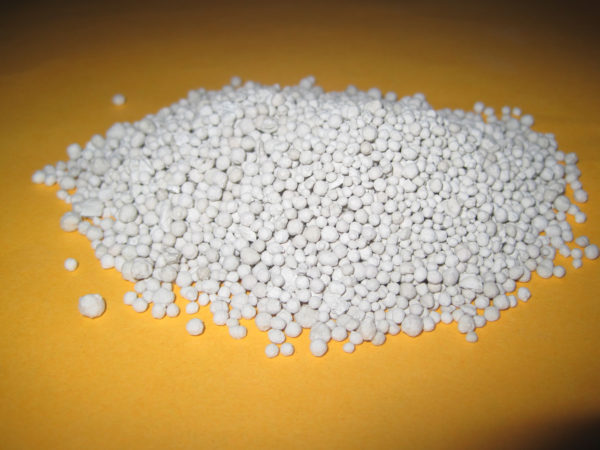
You can prevent the occurrence of the disease by preventive measures. Treat plants in advance to avoid problems. To do this, a solution with an antifungal biological product or a composition of several components that can be prepared at home is suitable:
- copper sulfate;
- zinc sulfate;
- superphosphate.
Superphosphate will require 2 teaspoons, the remaining ingredients - one at a time. Dissolve all the components in a bucket of warm water and water the bushes at the roots every two weeks, without mixing with other drugs and fertilizers. 5 liters of the resulting solution should go to the square of landings.
Landing pattern and care
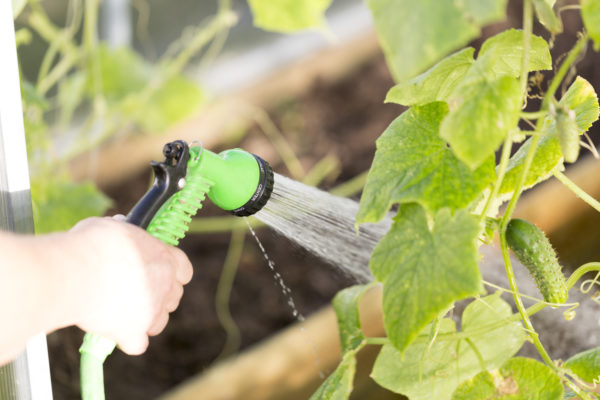
In addition to crop rotation, you must observe the accuracy of planting. If the plants are too close, their root system is in contact. Pathogens can roam from bush to bush. The optimal number of bushes per square is 3-4 pieces. Arrange them carefully, but so that there is room between the rows. If you notice that the plants lack nutrients - perhaps the planting is too tight. Observing the basic rules for caring for cucumbers, you can not be afraid of root rot.
- Water the plants only with warm water.
- Maintain an optimum humidity of 70-80% for cucumbers in the greenhouse.
- Inspect plants to identify signs of rot in time.
- Instantly remove bushes that are too damaged to heal.
- Control the moisture level so that the cucumbers are moistened, but not too much.
- Protect crops from temperature changes.
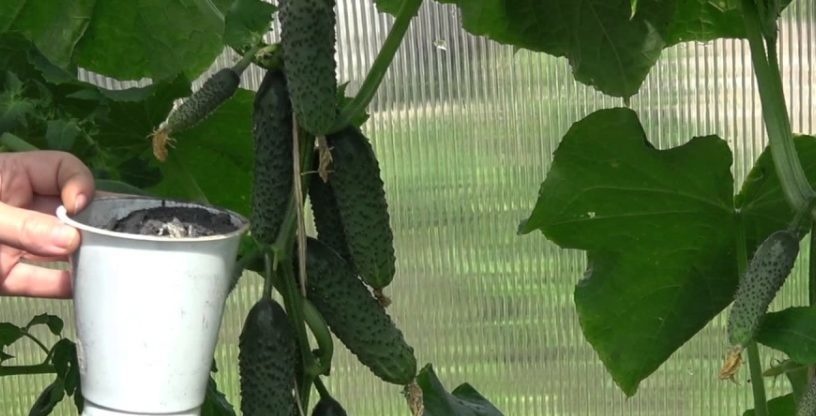 You may be interested in:
You may be interested in:Mulching the soil will help maintain an optimal environment during cooling. This will reduce the amount of watering, nourish the soil with useful substances and retain heat so that the cucumbers can grow even in cool weather.
Cucumber root rot develops in cold, humid conditions due to the pathogen fungus. To exclude the appearance of the disease, you must follow all the recommendations for care. Regularly change the landing site, renew the soil. In the greenhouse maintain the desired climate. You can fight root rot with chemicals, biofungicides or folk remedies, but all methods are effective only in the initial stages. You need to take action immediately, as you noticed that the plants turn yellow leaves or rotting areas appeared.

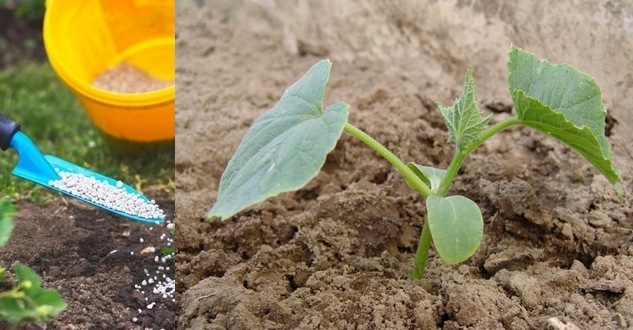
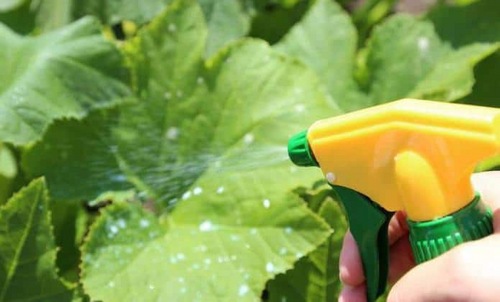
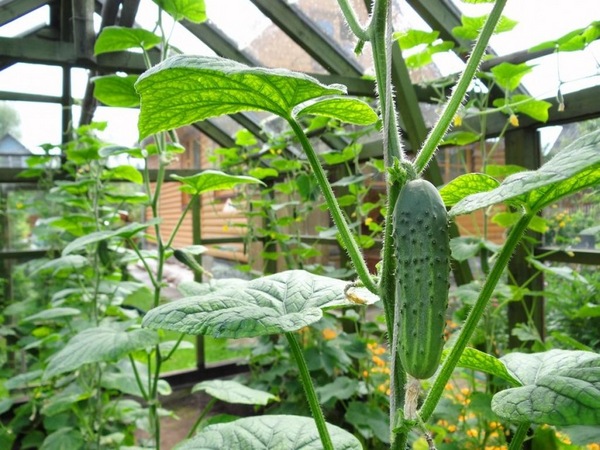
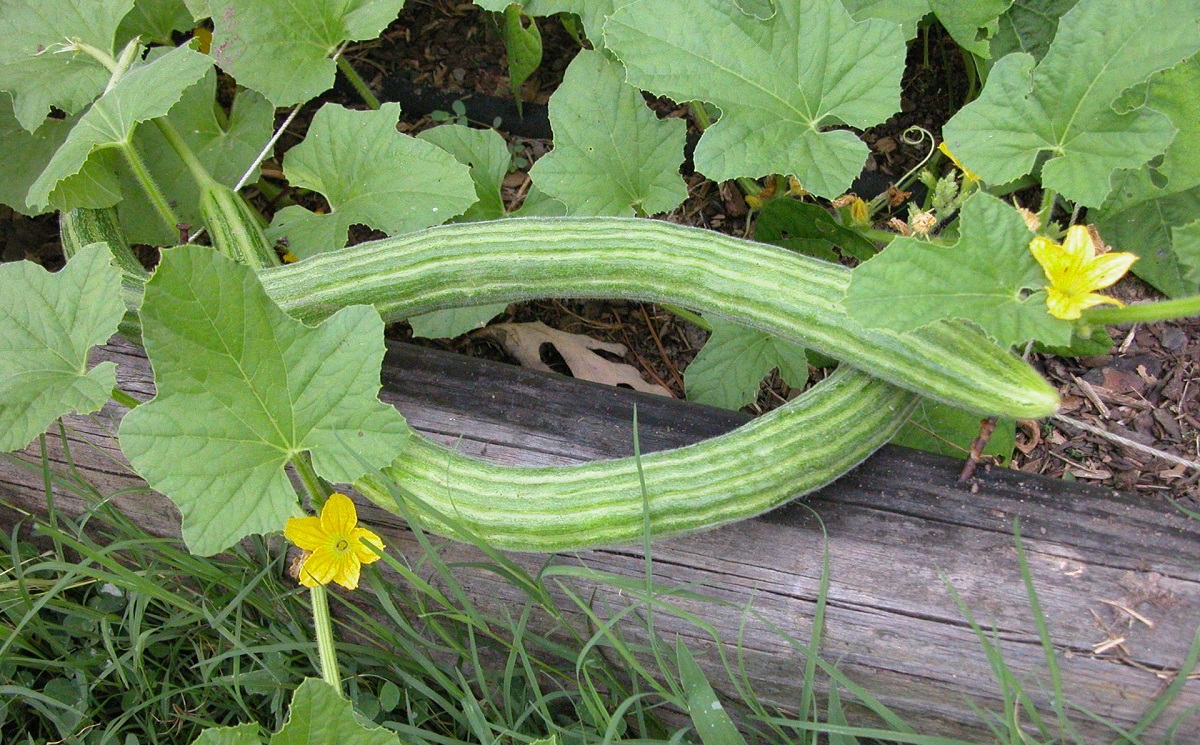 Armenian cucumber with melon flavor: description and characteristics, reviews
Armenian cucumber with melon flavor: description and characteristics, reviews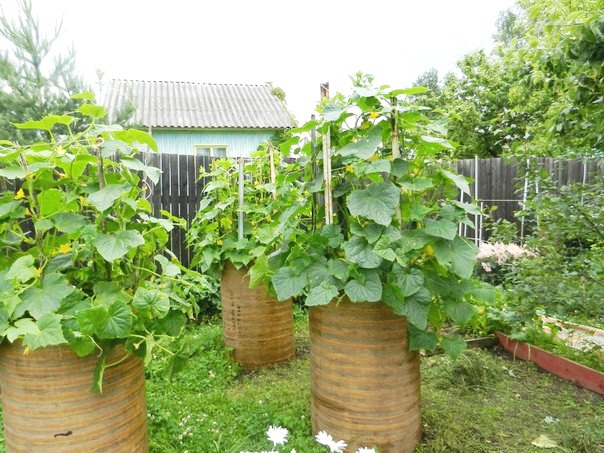 Do-it-yourself vertical beds for cucumbers: schemes, photos
Do-it-yourself vertical beds for cucumbers: schemes, photos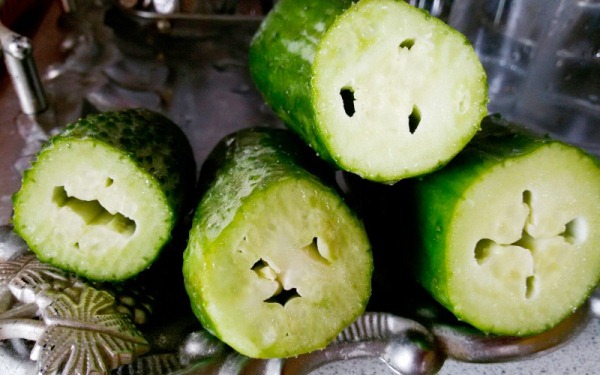 Hollow cucumbers: reasons for the appearance of hollow, what to do
Hollow cucumbers: reasons for the appearance of hollow, what to do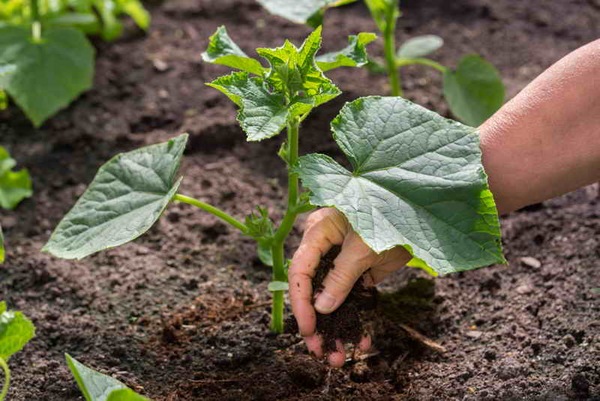 Which manure is best for cucumbers: application, how to breed
Which manure is best for cucumbers: application, how to breed